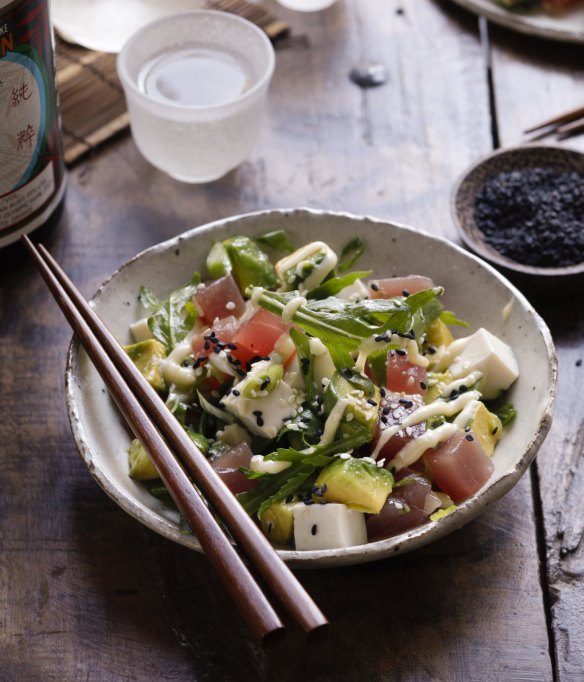Wasabi: Everything you need to know

What is it?
A root of a plant, originally from Japan, that spends its life submerged in cold running water. A member of the brassica family, wasabi has leaves that look like those from a hollyhock and a fat knobbly root that grows as long as your hand from your wrist to your fingertips. It is also grown in Tasmania.

In Japan, it is processed and used in wasabi paste and wasabi powder. Most commercial wasabi pastes contain about 5 per cent wasabi, 30 per cent horseradish and a lot of oil and bran as a filler. Wasabi powder contains as little as 2 per cent wasabi and 75 per cent horseradish. Both get their vibrant colour from E133, a synthetic blue colour used in cosmetics and pharmaceuticals, the blue made famous by Viagra.
Fresh wasabi leaves can be fermented with koji to create delicious, zingy little preserves served with a Japanese seasonal tasting menu.
Why do we love it?
That sting that goes up your nose, brings tears to your eyes and turns a slice of raw tuna into the ruby jewel. The discomfort is also ephemeral, receding rapidly, leaving the senses heightened. This sensation is caused by a compound called allyl isothiocyanate. It is created when the wasabi root is grated or crushed and is an evolutionary response to pest attack.
While horseradish and mustard (also brassicas) produce this compound, wasabi causes a much finer, cleaner irritating sensation, with an earthy, slightly fragrant aroma.
Who uses it?
Steak-loving chefs are big on this hot root. At Barangaroo in Sydney, chefs Brent Savage and Chris Benedet from Cirrus are serving chargrilled striploin steak with freshly grated wasabi and a sherry vinegar jus. Tetsuya Wakuda, of Sydney's Tetsuya, takes Tasmanian wasabi and folds it through a Dijon-style mustard for a sinus-clearing sirloin condiment.
"Traditionally, wasabi is grated using a sharkskin tool," says private Japanese chef Shin Hara from Gourmet Shin, who serves omakase set menus in homes in Melbourne. "The wasabi tip is spicier than the middle, so you need to mix some of the tip with the middle," he says. He serves his wasabi with sashimi within 15 minutes of grating; otherwise, it oxidises.
How do you use it?
With raw fish and grilled steak. In parts of Japan wasabi can be added to earthy vegetable soups to add a fresh zing. Belgium food scientists from The Art and Science of Food Pairing suggest using wasabi, both fresh and powder, with chocolate and marzipan, and fellow members of the brassica family such as cabbage. You can use the powder to add a kick of heat to a dish.
- Make a runny paste and brush over chicken pieces before crumbing and frying.
- Add a little of this paste to mayonnaise and dollop on a roast potato.
- Finely dice tuna and avocado, a little spring onion, and dress with ponzu shoyu, sesame oil and a little wasabi powder.
- Stir through and serve with rice.
- In the Daio Wasabi Farm in Japan they use wasabi powder to make ice-cream. Hot and cold, sweet and savoury, it is delicious.
Where to get it?
Wasabi is grown in northern Tasmania by Shima Wasabi and is available fresh in markets and specialty retailers or online. They also make high-grade wasabi paste made without horseradish.
You can try and grow your own by buying plants online from diggers.com.au.
Look in the tokyomart.com.au or fujimart.com.au stores in Sydney and Melbourne and look for S and B brand paste or essentialingredient.com.au for pure wasabi powder.
After more than 10 years of answering readers' vexing culinary questions, Richard Cornish is turning his focus to ingredients. Send ingredient suggestions to brainfood@richardcornish.com.au or via Twitter and Instagram.
Appears in these collections
- More:
- Food
- Brain food
From our partners
Original URL: https://www.brisbanetimes.com.au/goodfood/wasabi-everything-you-need-to-know-20210525-h1w1or.html
